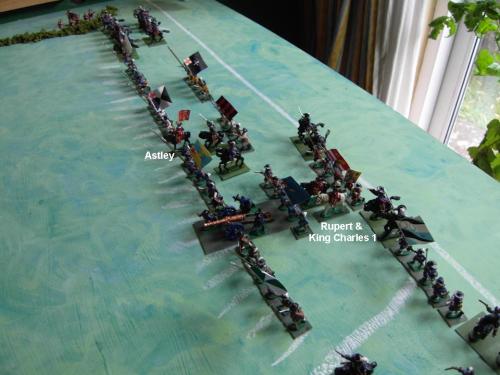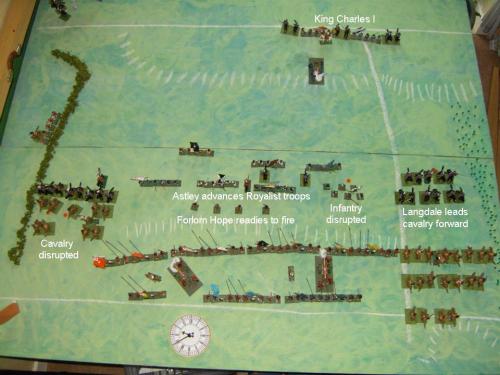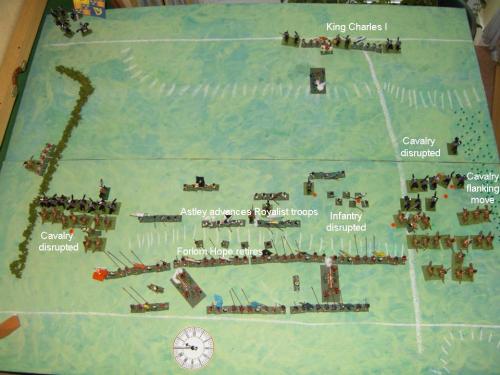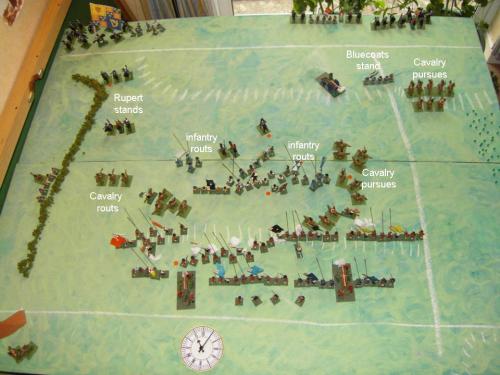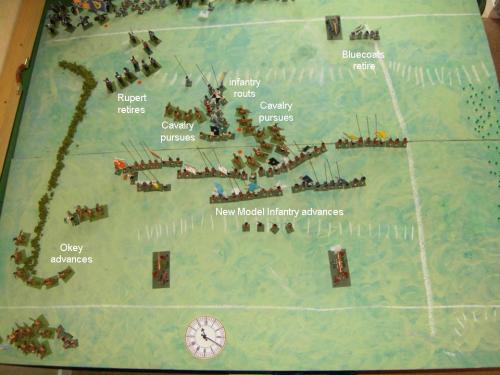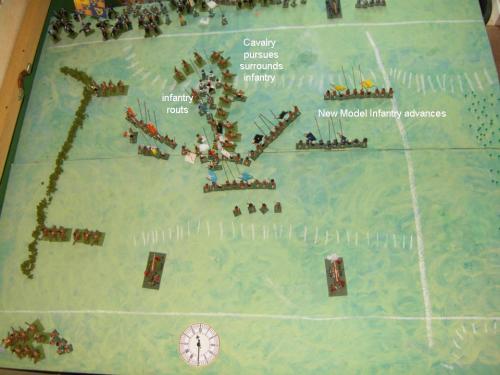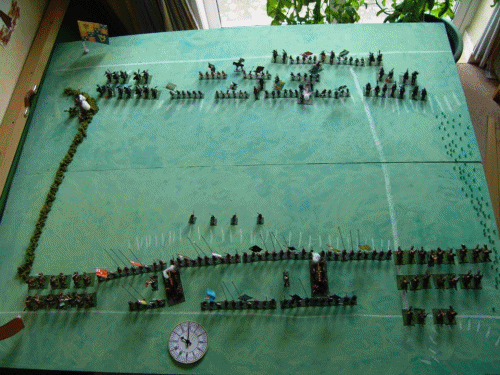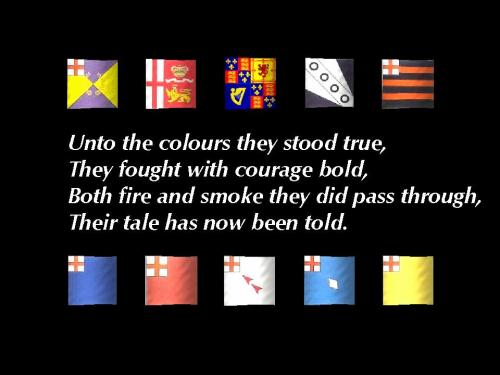
Two armies astride two hilltops
Face each other ‘twixt a divide,
Green vale’s width, but also polity,
Religion, and man’s mortal pride.
Behold Charles Stuart and the King’s men,
Kneel down with their book of prayer,
The Bible of King James, the Father,
Of those who fight for his heir.

Red coated, the New Model Army,
Kneel down with their book of prayer,
The Geneva Bible of Calvin,
They fight for their rights they swear.
Two armies leave their two hilltops,
Do battle in grassy divide,
By musket, pike and sword’s edge,
God’s judgement; with whom shall he side?
IMR (images from Cromwell)
The path to the battle began in 1645, with the deadlock between the two armies; the Parliamentarian New Model Army and the Royalist Army of Charles I. The country was split into regions controlled by one of the warring parties.

Parliament had failed to destroy the Southern Royalist army at the Battle of Newbury, despite their success in 1644 at Marston Moor, where a mixed Parliamentary – Scottish Covenanter army destroyed the Northern Royalist army under Prince Rupert.
In response, Parliament passed the self denying ordinance , which allowed the creation of the New Model Army, a professional army ready to serve across the whole of England. It was officered by men who were not members of Parliament. This excluded the aristocratic leaders from further command who had earlier dominated the Parliamentary armies. Command of the New Model Army passed to Sir Thomas Fairfax. Oliver Cromwell managed to escape the stricture of the self denying ordinance by means of forty day extensions to his service, which were continually renewed.
Following the fall of Leicester to the Royalists at the end of May 1645 , the New Model Army broke their siege of Oxford and headed northwards, with the aim of engaging the King’s army in battle. Inadvertently, the King’s army headed southwards.

The path to the battle had commenced. By June 12th, the New Model Army were sufficiently close to see the campfires of the Royalists, as they broke camp and headed northwards again.
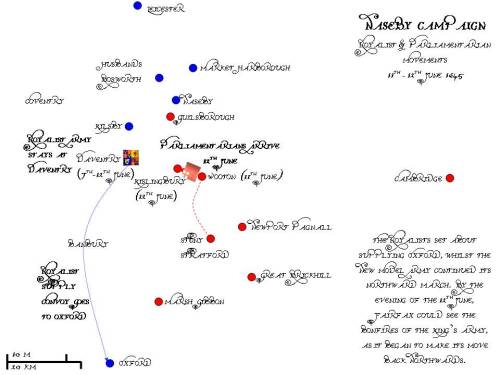
The Parliamentarians pursued hard and Cromwell and his Ironsides rejoined the New Model Army on June 13th, the eve of the battle.

Both sides knew a battle would be fought the next morning, and headed to Naseby, choosing their ground atop two hills, with Broad Moor in the valley between them.
The New Model Army outnumbered the Royalist army by roughly 2:1, but this seemed not to deter the King’s men. Prince Rupert had a soldiers respect for Fairfax and Cromwell, but the rest of the Royal party believed the New Model army were incapable of putting up a strong fight. Each drew up their army in the conventional style for the period; cavalry on each flank, and infantry in at least two lines in the centre, interspersed with the available artillery.

A flanking move suggested by Cromwell by the Parliamentarian Dragoons under Okey opened the battle, putting Prince Rupert’s troopers under an enfilade fire.

This constant harrassment forced Prince Rupert into charging his opponents, the New Model cavalry on the Parliamentary left flank under Henry Ireton, Cromwell’s son-in-law.

Ireton rode forward to meet the challenge, and Lord Astley, the commander of the Royalist infantry moved forward in turn.

Stalemate existed between Rupert and Ireton’s men as they fought it out. Lord Astley finally reached the New Model Army infantry, who gave an ineffective initial response to the Royalists.
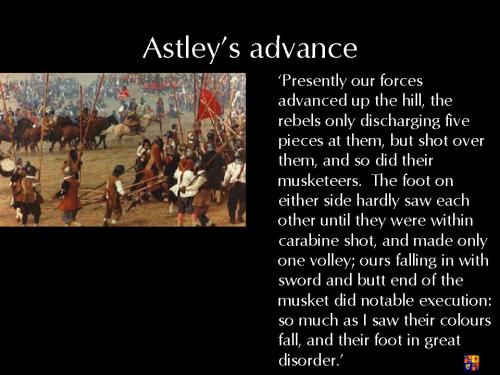
Meanwhile Marmaduke Langdale, commander of the Royalist cavalry on their left flank moved forward to engage Cromwell’s Ironsides.

Prince Rupert’s troopers broke through the left flank of Parliament, and their horse fled the field. Prince Rupert was unable to control his men, as the Royalists pursued the fleeing men, onto the Parliamentary baggage train to the rear. The baggage train held off their attackers. Soon after, the centre of the New Model Army infantry began to give ground under the onslaught.

Perhaps the King was right, as it seemed Parliament was losing the battle…
But Cromwell’s men, outflanked Langdale’s and scattered them. Superior training and command now paid off, as Cromwell send some of his troops in pursuit, whilst the rest fell on the Royalist infantry exposed flank and rear.

At this critical juncture, the King attempted an intervention, but was restrained. He left the field, together with his Lifeguard, with Rupert’s Bluecoats covering their movement.

The battle was won, and the New Model Army closed around the Royalist infantry forcing surrender.

A final stand was made by Prince Rupert’s Bluecoats, who were overwhelmed by Fairfax’s regiment and the Ironside troopers.

The King has lost his infantry, with over 1,000 killed and about 4,000 captured during the battle and following pursuit. He also suffered the capture of his correspondence, which lost him valuable goodwill, once published by Parliament.
The complete slide pack (with many more slides and animations) is available for download as a Powerpoint slideshow below.






